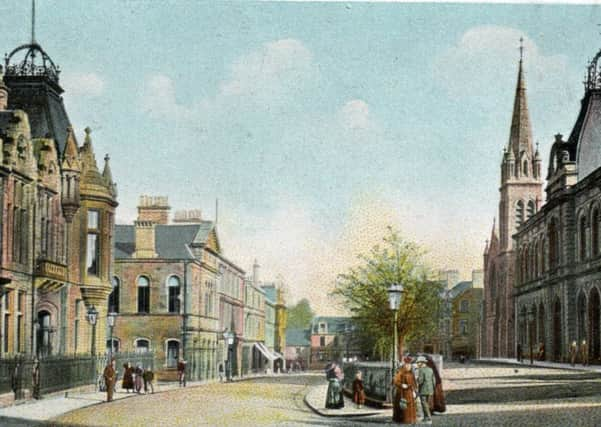Town centre is streets ahead in its architecture


A century or so earlier the street was little more than a narrow track running across the Parish Church glebe but the arrival in the 1850s of the new market at the back of the church brought a huge increase in horse drawn carts and demands for improved access.
One visitor reported that “I counted 65 horses and carts all laden with grain standing in a row along the glebe dyke. They reached from the minister’s barn to the gate of Aiken’s Brewery. I never saw such a sight in Falkirk before.”
Advertisement
Hide AdAdvertisement
Hide AdThe situation was made worse when that market was replaced by a Corn Exchange which later became the popular Falkirk Town Hall. It opened in 1879 but, much to the regret of the townspeople, was demolished in 1968 after the new town hall was built at Westbank.
The ‘‘New Market Road’’ soon became a desirable place to build commercial premises including the fantastic National Bank on the corner of Vicar Street (1862) with its little statue of St Andrew and the Royal Bank building at the West End which also dates from 1879.
The following year came the old burgh buildings and the YMCA which acted as a lending library for some years and bears the glowering heads of John Knox and two of the old religious reformers.
In 1896 Falkirk Free Church, which had its place of worship in Garrison Place, moved to a beautiful red sandstone building with towering spire designed by local architect James Strang.
Advertisement
Hide AdAdvertisement
Hide AdIt is now St Andrew’s Parish Church. All five of these buildings survive to help lend architectural beauty to the street.
A decade before the new church opened, the powers that be decided to tackle the congestion problem by dividing the Newmarket Street into upper and lower sections with a stretch of garden ground between offering the opportunity for some colour in what was still a dull and smoky town.
It proved a perfect spot to relocate the Duke of Wellington from his place below the steeple, a move completed in 1905.
A year later, at the other end, the handsome South African War Memorial was erected.
Advertisement
Hide AdAdvertisement
Hide AdThe total reconstruction of the Lint Riggs between 1904 and 1911 brought the replacement of the old New Market Inn by the present Newmarket Bar owned by Aitken’s and home to their offices upstairs just across the road from the brewery itself.
Aitken’s had opened in 1740 on the south side of the road but the following century extended to the empty land to the north.
In 1900 the famous old red brick building with its huge chimney appeared and for another 70 years dominated the west end of the town.
The firm closed in 1968 and the chimney and the building disappeared in 1970.
Advertisement
Hide AdAdvertisement
Hide AdHowever, one of the most famous places in the street remained out of sight but not out of the mind of those of us forced to use its services.
Just west of the Duke’s plinth, with a glass roof at street level, was the underground gents’ toilet which provided relief to many a bairn in the 20th century.
It is probably still there, waiting for some future Geoff Bailey to dig it up and marvel at the white glazed tiles and maybe the skeletal remains of some poor soul who didn’t make it out in time!